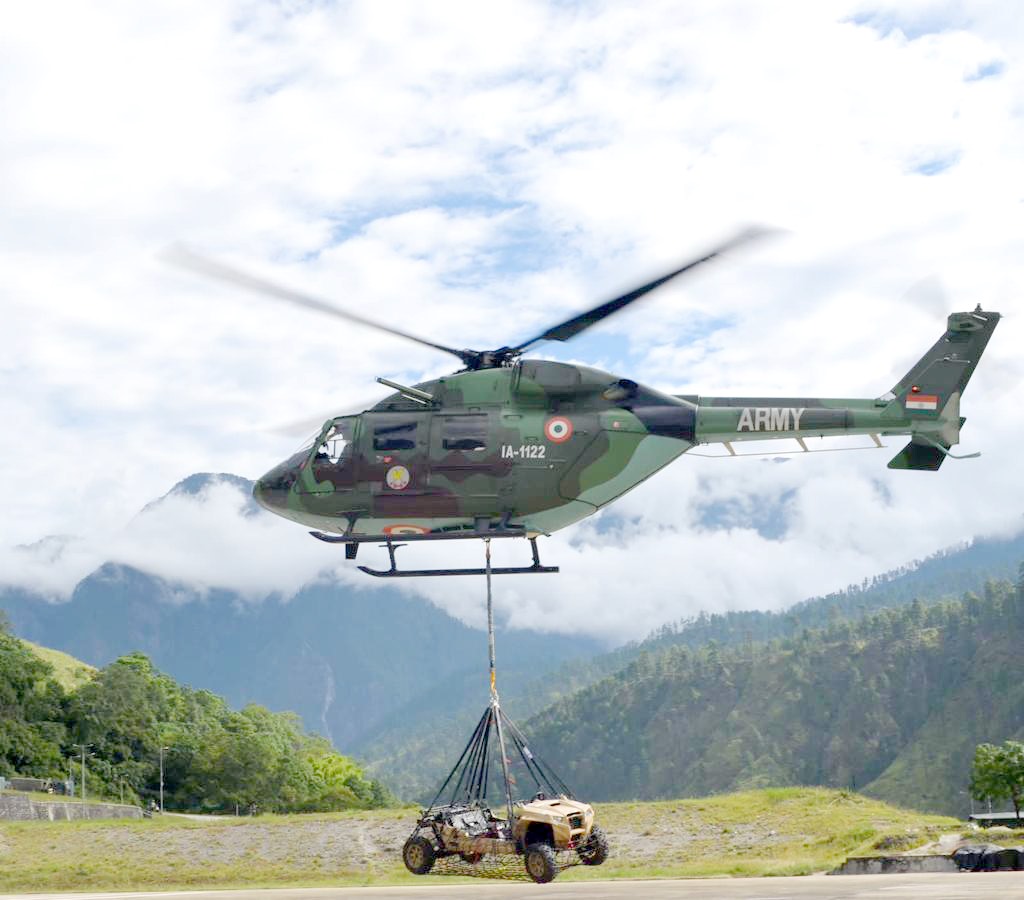The debacle with Ecuador has long haunted the Indian-made Advanced Light Helicopter (ALH) ‘Dhruv,’ but its MK III variant could redeem its reputation. An Argentinian team has been in India for the trials of the MK III and MK IV variants of the helicopter.
Sources tell the EurAsian Times a team of Argentinian Army was at Hindustan Aeronautics Ltd (HAL) Bangalore and flew both ALH MKIII and MK IV.
“It was not a customer demonstration but a trial by the Argentinian pilots. The team was very satisfied by the performance of the helicopters,” sources added. Argentina is looking at ordering 20 of these units.
The ALH MK III has many improvements over the first ALH iteration, which was India’s maiden export to Latin America. Since the new impetus on defense exports, the Indian foreign service and defense attaches have been burning midnight oil to find buyers for Indian-made aircraft – both rotary wing and fixed wing.
After several crashes, Ecuador grounded its fleet of Indian-made helicopters and put the choppers up for sale. The country also unilaterally canceled its order for more ALHs from India. India, in turn, took the Ecuadorian government to court over the matter.
Over 300 units of ALH are currently deployed with the Indian Armed Forces. The major change in the ALH MK III is that it is powered by a Shakti engine, developed under a joint venture between HAL and French engine makers Safran. With its glass cockpit, it has advanced maritime patrol radar, electro-optical payload, and a Night Vision device.

The MK III version has a new electronic warfare (EW) suite, warning systems, automatic chaff and flare dispensers, and an improved vibration control system.
It was first inducted into the Indian Navy in 2021. Since then, it has been inducted into the Indian Coast Guard as well. Its state-of-the-art sensors have been adding punch to India’s maritime prowess.
It is a multi-role helicopter with the capability to support special forces and carry out medical evacuation and search and rescue roles.
The MK IV variant is the armed version of the ALH called ‘Rudra.’ It is meant for attack, close air support, and high-altitude operations. The high-altitude operations can be of particular interest to the South American country, whose entire western border is mountainous. Almost 30 percent of the country lies in the Andes Mountain range.
Argentina, the eighth largest country in the world, requires light combat helicopters to secure its mountainous region. The airpower of Argentina is not commensurate with the expanse of its area. Argentina’s air force, army, and Navy together operate a total of 95 helicopters, with an average fleet age of 44.3 years.
The most prominent type is the Bell UH-1H, flown by the Argentine army. The average age of this combined fleet is 50.9 years. The other helicopters in its fleet are Airbus Helicopters, Leonardo Helicopters, MD Helicopters, and Sikorsky. The youngest rotorcraft in its fleet are six Bell 412s operated by the Argentine Air Force, with an average age of 9.3 years.
Compared to the Argentine light utility helicopter, McDonnell Douglas Helicopter Systems MD 500 Defender, Dhruv has almost five times the service ceiling at 6,100 m. In all aspects, Dhruv outperforms the aging light utility helicopter that Argentina deploys.
The Indian Army and the Indian Air Force (IAF) are rather very happy with the helicopter, with the former actively using it in high-altitude forward locations in Ladakh for challenging medical evacuation and sometimes disaster relief missions.
India has been positioning itself as a cheaper alternative to Western defense manufacturers.
Will History Repeat Itself?
The Ecuador deal ending in disaster made a huge dent in ALH’s reputation. The HAL has been pushing MK III and MK IV as much improved variants.
However, following a crash of ALH in Jammu and Kashmir on May 4, 2023, resulting in the deaths of two pilots, the Indian Army grounded its fleet of 170 ALHs and undertook a comprehensive safety check. The pilots had reported “loss of power.”
This is the third time that checks have been ordered since October 2022. An Indian Army aviation ALH MK IV variant helicopter had crashed near Migging in Arunachal Pradesh in October, killing all five on board.
In March, the Army, the Indian Air Force, and the Navy grounded their respective ALH fleets and carried out checks. This was after a Navy ALH had to ditch — land the copter on the water — due to “loss of power.”
Metallurgical issues with a critical component called the “control rod” in the gearbox were flagged by the Indian forces. The control rod in the gearbox is critical for transferring power from the two engines of the copter to its overhead rotors.
The main functions of the control rod in a helicopter gearbox are to transmit the pilot’s control inputs to the main rotor and tail rotor systems, allow the pilot to control the pitch of the main rotor and tail rotor, enable the pilot to move the helicopter in the desired direction and is a critical component of the helicopter’s flight control system.
The control rod in ALH is made of aluminum, and the HAL decided to replace it with steel control rods in some helicopters.
Special checks have been put in place for the rod every 100 hours of flying instead of the present examination done every 300 hours. This will increase the fatigue tolerance of the copter and better control of the aircraft by the pilots. The decision to make the change was suggested by a regulatory panel.
- Ritu Sharma has been a journalist for over a decade, writing on defense, foreign affairs, and nuclear technology.
- She can be reached at ritu.sharma (at) mail.com